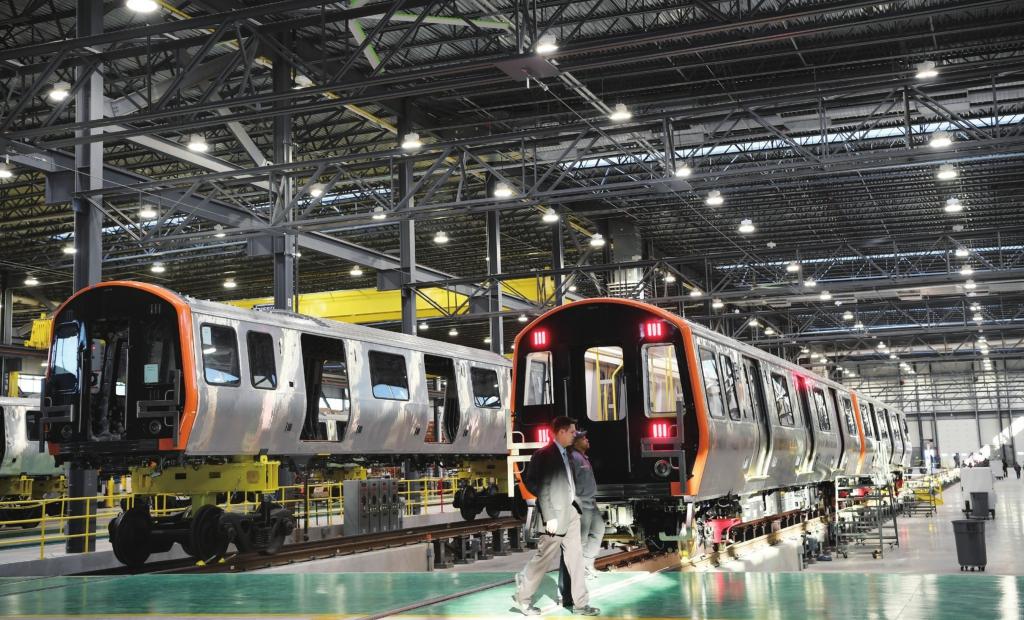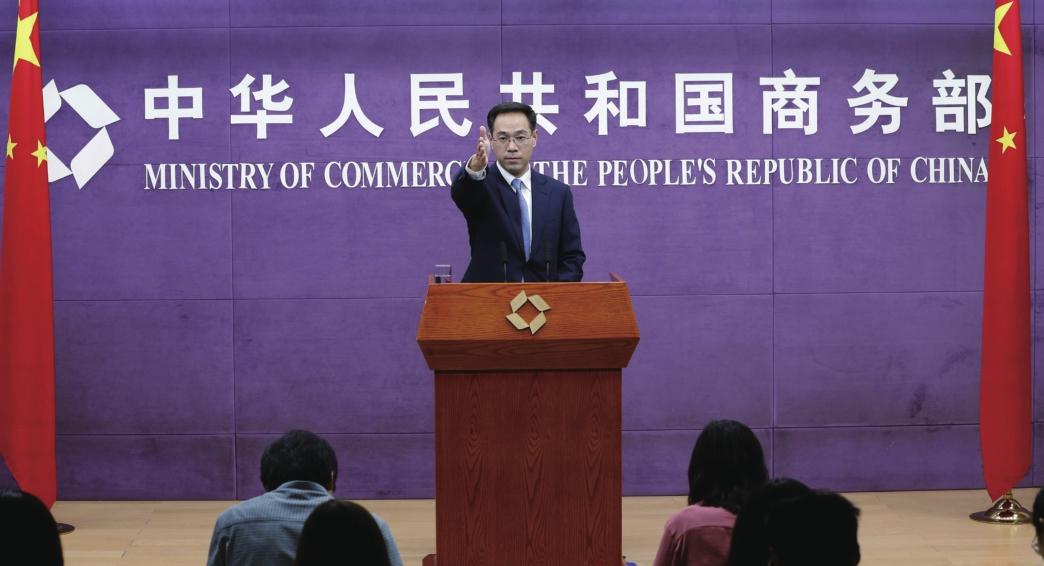Truths About the China-U.S.Trade Relationship
2019-07-09
The U.S. Government has unilaterally provoked and escalated trade friction with China since last year, casting a shadow on the China-U.S. trade relationship and the development of the world economy. Qiushi Journal, affi liated with the Communist Party of China Central Committee, published an article in its 12th issue of 2019, clarifying questions regarding China-U.S. trade friction. An excerpt of the article follows:
A zero-sum game?
In international economic cooperation, a normal trade relationship is built upon mutual benefit based on equivalent exchange rather than a zero-sum game, where ones gain is the others loss. Throughout the historical development of the China-U.S. economic and trade relationship, the two countries have boosted their economic development and industrial structure optimization by complementing each others advantages and exchange of needed goods. Bilateral commercial exchanges have been mutually beneficial and not China “taking advantage” of the U.S.
International trade increases profits for participating countries, but the distribution of profits among participating countries may be unequal. U.S. enterprises, which have higher productivity, rank higher in the global supply chain and thus make more profits in international exchange. It is estimated that China would have to export over 100 million shirts in exchange for a Boeing aircraft. This anecdote sounds shocking, but it reveals the nature of international trade. For a long time, the U.S. gained paranormal profi ts in international trade because of its monopoly in currency, technology, markets and industrial standards. U.S. companies and people enjoyed cheap and quality goods from developing countries including China. Of course, China has also profited from the China-U.S. economic and trade cooperation, but it earned it by the diligent work of the Chinese people. Standing at the middle to low end of the global supply chain, China has made significant sacrifi ces in international trade exchanges.
Is “reciprocal trade” fair?
In international trade, given the differences in stages of development, specific circumstances and the pursuit of profits, the international community establishes the principle of trade rules on the basis of equal consultation. Thus, trade fairness is not decided by one country, and trade rules are not based on one countrys profits either. Trade fairness needs to be decided by multilateral equitable consultation.
The so called “fair trade” claimed by some in the U.S. is not based on inter- national rules, but the presumption of America First, which aims to advance U.S. prof its. Its core is the so-called “reciprocal”trade, which means each country should align with the U.S. on specific productstariffs and each industrys market access. Pursuing an absolute reciprocity is ostensible fairness. But since it ignores the right of development for developing countries, it is profoundly unfair.
For a long time, there have been some seriously unjust phenomena in international trade. The U.S. and other developed countries utilize their technology advantage and monopolistic power to rake in low-price resources, labor and goods from developing countries. This unfair trade pattern, on the one hand, brings tremendous profi ts to the U.S.; but, on the other hand, entails huge losses for developing countries.
The rules of the World Trade Organization (WTO) are negotiated and agreed upon by all economies. If trade confl ict occurs between WTO members, its basic rule is to resolve the confl ict within the WTO structure to maintain equal economic and trade relationships. The U.S., as one of the WTO founding countries, should obey this basic rule, but some in the U.S. have not. Instead, they bypassed the WTO to play at trade hegemony and bullying.
Will unilateralism work?
Supposedly, unilateralism is deglobalization and anti-globalization, a measure of separatism. However, this is only one aspect of it. More importantly, some in the U.S. claim that multilateralism, which features equal cooperation, binds U.S. hand and foot, goes against the America First strategy and is unfavorable to the consolidation of the countrys hegemony. Therefore, they are anxious to adopt invasive unilateralist measures to suppress their rivals, crush them one by one, create an international order that more closely aligned with the America First principle, and obstructs newcomers from progressing.
In todays world, the technological revolution and the development of productive forces increasingly push global specialization. Economic globalization is an inevitable trend, which further accelerates the globalization of trade, investment and the liquidity of production factors.
With the deepening of interdependence among nations, emerging market countries and developing countries are rising up collectively and changing the pattern of the world. Global multipolarization and democratization of international relations are irresistible trends of the era. The mindset of having a monopoly over international affairs is already behind the times and accompanying acts will be doomed.
Will technology hegemony prevail?
Science and technology are the shared fortune of human society. However, in the eyes of some in the U.S., technology is a right to be exclusively controlled and enjoyed. To protect its hegemonic position in economy and technology, the U.S. Government has imposed a regulatory policy on hi-tech exports to China. Amid the current trade friction, the U.S. is further abusing its state power by initiating a technology blockade of Chinese enterprises. Technology hegemony must not be allowed to succeed.
Promoting technological innovation and progress is a legitimate pursuit of every country. Strengthening technological cooperation and communication is the key driver of human progress. To meet peoples increasing demand for a quality life and serve both the Chinese people and the entire world, it is our mission and also our right to profoundly promote technology innovation, strengthen technology cooperation and combat technology hegemony.
After long-term and consistent efforts, China has made great achievements in its technological development. They are neither “stolen” nor acquired through“forced technology transfer.” They are the result of millions of technology professionals independent and diligent work and international technology cooperation on a mutually benefi cial and win-win basis.
Will “extreme pressure”work?
Cooperation entails issues of principle, and consultation must be equal, mutually benefi cial and sincere. Therefore, China will not give ground on major principles. Those in the U.S. who want to apply “extreme pressure” to coerce China into submission are doomed to fail. Any attempts to isolate China will backfi re, and any pressure targeting China will raise Chinese peoples strong aversion and fi erce objection.
Mutual respect, equality and mutual benefit are fundamental rules of international relations. However, the U.S. strategy of extreme pressure goes against these rules and severely disrupts WTO rules and the international order. History has shown that any attempt to reach an agreement through pressure will destroy the two countries bilateral cooperative and trusting relationship and squander the historic opportunity to cooperate. These U.S. measures are not only unbenefi cial to resolving the confl ict but are actually hurting both sides profi ts.
Will protectionism lead to manufacturing reshoring?
In the process of economic globalization, U.S. transnational companies have transferred more and more industries to developing countries to maximize profi ts. They increase the profi t margin of capital through industrial transfer, cost reduction, market expansion and pollution transfer. Meanwhile, more capital shifts away from the low-profi t real economy to the fi nancial sector for speculation.
In the current international economic system, the U.S. dollar is the global currency on which the international economic pattern is built. The U.S. supplies the currency, while other countries, especially developing countries including China, provide goods. The U.S. imports a lot more, resulting in a trade deficit; other countries export more, leading to a trade surplus. This means that any U.S. attempt at manufacturing reshoring to reduce the trade defi cit may hurt the hegemony of the U.S. dollar. In fact, the growth of the U.S. manufacturing sector only constitutes 11.4 percent of its GDP, while fi nancial insurance and the real estate and leasing industry make up 20.7 percent, showing an even more severe trend of deindustrialization and financialization than in 2007 before the world fi nancial crisis. Thus, it will not be easy for the U.S. to achieve manufacturing reshoring.
Does trade friction boost U.S. economic development?
According to some indicators, the U.S. economy is growing. However, whether the upward momentum is sustainable will be decided by the conditions of capital accumulation. In the fi rst quarter of 2019, the seasonally-adjusted growth rate of fixed investment in the private sector was only 1 percent, signifi cantly lower than in 2017 and 2018. According to offi cial U.S. data, durable goods orders declined by 2.1 percent month on month in April, higher than the expected 2-percent drop. In addition, core capital goods shipments—the most important gauge for economic expansion—decreased by 0.9 percent in the same month. As far as the development trend is concerned, economists have opposing views on the future of the U.S. economy. The U.S. National Business and Economic Society reported recently that many economists predicted that the chance for a recession in the U.S. economy before 2020 has doubled, mainly as a result of protectionist measures of the U.S. Government.
Do tariffs benefit U.S. consumers?
Economic and trade friction hurts the pockets of ordinary U.S. consumers. Since a large portion of the products imported from China are regular consumer products, the increased tariffs on Chinese products will eventually fall mostly on U.S. consumers.
Economic and trade friction is also bad for U.S. employment. Imposing tariffs will lead to a hike in U.S. labor reproduction costs, limit demand for the labor force and further restrain employment growth. U.S. enterprises will also have to bear higher prices for raw materials.
Will it crush Chinas economy?
This year, Chinas economy is off to a good start, with major economic indicators in the rational range. Chinas economic structure is optimizing, the development method is transforming, quality and benefits are improving, and the stable and upward trend is more obvious.
Although China-U.S. economic and trade friction poses new uncertainties for Chinas economy, the long-term upward fundamentals of its economy have not changed. China has a population of almost 1.4 billion, where 900 million are in the labor force, 170 million are highly educated, skilled human resources and comprise the largest middle-income group in the world, and over 100 million are market entities. The economic development model driven by domestic demand is a powerful weapon against the risks of international trade. New momentum, represented by strategic emerging industries and the sharing economy, among others, will inject new vitality into the development of the Chinese economy.
There is adequate space in fiscal, monetary, revenue, industrial, technology and investment policies. China has the conditions, capabilities and confidence to confront various risks and challenges.
However, it is still vulnerable in core technology. China will increase investment in and research of core technology, gather more talent and free itself from foreign stranglehold. China must transform developmental pressure into momentum for high-quality development.
Chinas stance
In light of the economic and trade friction provoked and escalated by some in the U.S., China repeatedly states its principled position of “not wanting a trade war, not being afraid of one, and ready to fight one when necessary.” As some in the U.S. continually challenge and disrupt the current international order, China adheres to a mutually beneficial and win-win stance to actively participate in the reform and construction of the global governance system. In terms of the negative impact of China-U.S. trade friction, China will remain independent and selfreliant, deepen reform, expand opening up, stay on the path of high-quality development and focus on running its own affairs well.
